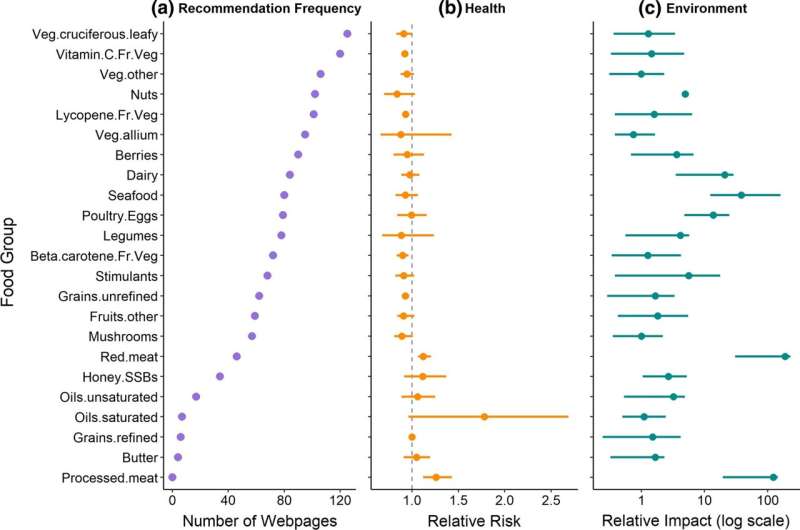
QUT ecologist Dr. Ayesha Tulloch, dietitian Professor Gallegos and UQ ecologist Dr. Rachel Oh analyzed 150 webpages from six world regions and found 83% of the 2,556 recommendations for food items that might “boost” immunity were plant-based.
“We found a variation—from a high of Australia’s 82.5% plant-based food recommendations to a low of 77.7% in the U.K.,” Professor Gallegos said.
“While there is no evidence that any one food provides immunity from infectious diseases, a person’s overall diet can affect their health and disease susceptibility. The only evidence-based approach to disease immunity is vaccination.
“Clinical studies show, however, that poor nutrition increases the risk of infection and nutrients such as vitamin D, zinc and the phytonutrients found in plants protect against disease, can improve defense against and resistance to infection.”
The six most frequently recommended food groups were all plant-based:
- cruciferous and leafy green vegetables eg broccoli
- vitamin-C-rich fruit and vegetables eg citrus fruits, pineapple
- other vegetables
- nuts
- lycopene-rich fruit and vegetables such as tomatoes, red peppers/capsicum
- onions and garlic
“By eating an extra serving of any food in these six most frequently recommended food groups each day will, on average, reduce the risk of chronic diseases and all-cause mortality.
“Of the 23 overall recommended food groups, we found that food groups (whether animal or plant based) with higher online recommendation frequencies had significantly lower relative health risks than food groups that were less recommended.”
Dr. Tulloch said the average environmental impacts of the six top-ranked food groups were also generally lower than rarely recommended food groups.
“We determined for each of 150 foods how agricultural production of a serving of each food impacted five types of environmental degradation: greenhouse gas emissions, land use, scarcity-weighted freshwater use, and acidification of soil and eutrophication (two forms of nutrient pollution) using data from two global studies,” Dr. Tulloch said.
“Our analysis showed that eating a serving of a more frequently recommended food over a less recommended one, would result in lower environmental impacts for greenhouse gas emissions and land use, and lower health risks.
“While land environments fare better when people eat the most frequently recommended food, we did not find this outcome for the aquatic impacts of producing the most recommended foods.
“Highly recommended foods groups tended to have higher impacts on aquatic environments, due to use of chemicals and freshwater during production.
“The significant increase in freshwater impacts with food-group recommendation frequency was driven primarily by high water use required to produce dairy, farmed seafood, nuts, some fruits and legumes.
“Nutrient pollution of waterways also increased with frequently recommended plant foods such as nuts, berries and some vegetables.”
The researchers also found that not all recommended foods had joint benefits of reducing negative impacts on both health and the environment.
“For example, yogurt, eggs and poultry comprised the 6th, 11th and 17th most frequently recommended foods, despite being in the top quartile of the worst outcomes for environmental and health impacts.
“Thus, foods with a low land impact can have high environmental impacts if their production is dominated by water, fertilizer and pesticide intensive methods that use large volumes of water and produce water acidification and algae growth.”
The researchers said the public’s interest in food’s health and environmental impacts was an opportunity to build an engaged and empowered community.
“Empowering the public to change eating habits and food consumption to more sustainable practices is complex and requires a combination of approaches and online information should not be disregarded in this mix,” Professor Gallegos said.
“In times of crisis when people are more likely to seek information, the opportunity to engage with the public online and build awareness of beneficial behavior change.”
Source: Read Full Article


